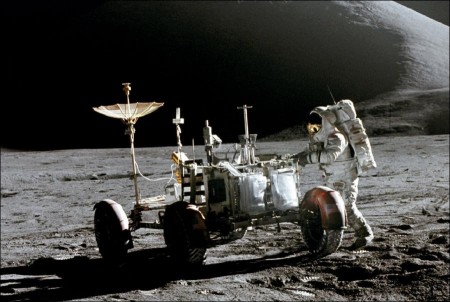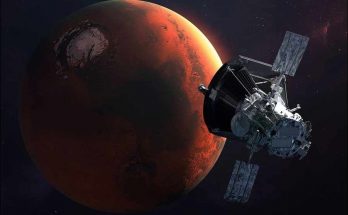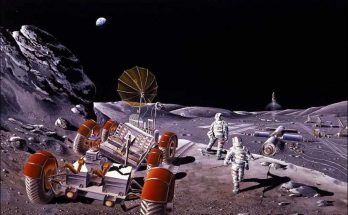NASA releases the sharpest images ever of walking paths and debris at the Apollo landing sites.
A spacecraft around the moon broke the highest ever pictures of the tracks and debris left by the Apollo astronauts on their visits from 1969 to 1972.
Orbiter images taken by NASA’s Lunar Reconnaissance of 13 to 15 miles up the road show when astronauts walked on the moon, and the ruts left by a moon buggy. Experts could even identify the astronauts back to lunar landers acute prior to their return to Earth.
“What we see is a track,” said Arizona State University geology professor Mark Robinson, chief scientist for the orbiter. “It’s really great.” However, the photos are not close enough to see individual Bootprints said Robinson.
The photos were taken two weeks ago and to show the landing sites of Apollo 12, 14 and 17. The images are closer to the Apollo 17 site in 1972, the last lunar mission.
Apollo 17 commander Eugene Cernan wrote in an email to the Associated Press that the picture gives him a chance to review these days “, this time with a bit of nostalgia and disappointment. Nostalgie because these special days are fondly etched in my memory and disappointment, as it now looks like we will not be back in the days I have left on this planet. ”
Two years ago, images of the same spacecraft 30 and 60 miles showed blurred images. But this year, the orbiter dropped to about 300,000 to more close-ups. The traces left by the astronauts are clear, but where the backpacks were rejected, moon buggy Apollo 17 and the lower parts of lunar landers three are unclear.
“You really have to look long to find what you’re looking at,” said Robinson. For example, when it comes to the moon buggy he said, “if you squint real hard, you can solve the wheels and that the wheels are turned slightly to the left.”
At first, scientists thought they had a bit of a mystery: They saw more things than expected. It turned out to be packing material and an insulating blanket, said Robinson.
After 40 years it does not seem to be much of moon dust covering the synthetic tracks. It will probably take about 10 to 100 million years for the dust cover, said Robinson.
The photos were released a few days after the start of the new feature film “Apollo 18” and above to be launched Thursday from the NASA spacecraft to explore robotic doubles the gravity of the moon.
Views: 413



